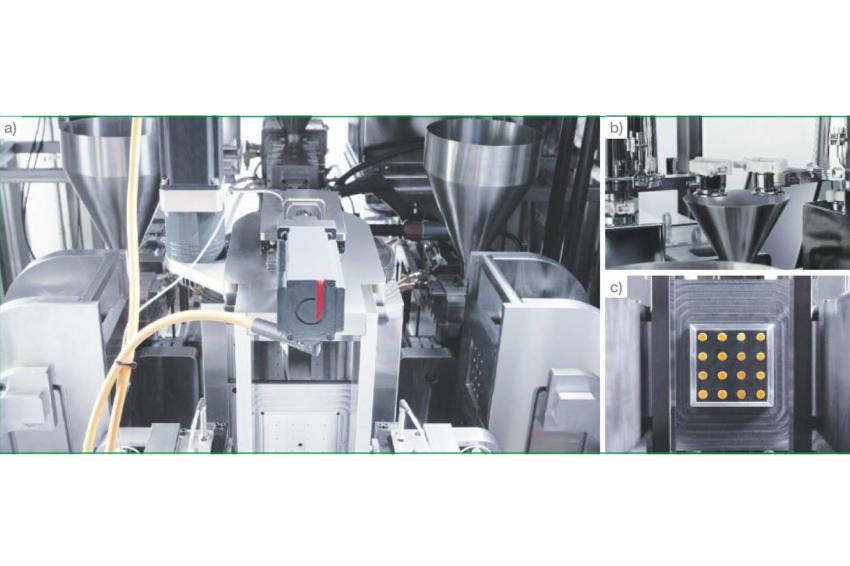Integrated Continuous Manufacturing in Pharmaceuticals
A Completely Modernized Model for Cost-Competitive End-to-End Drug Production
As Covid emerged, scourged, and finally receded into a manageable disease, we were all alerted to the fragility of our pharmaceutical supply chain. It was sobering to learn, for the first time for many, that we did not have access to all of the drugs we consume, even those that are lifesaving.
Unfortunately, this problem predates the Covid era, and is the consequence of an outdated production system and a disproportionate reliance on foreign manufacturers, particularly countries where quality standards are often lacking. In the United States, it is not uncommon for over a hundred drugs to be on shortage at any given time. The majority of these cases are a result of manufacturing issues, such as quality infractions.
The current standard of pharmaceutical manufacturing, batch, is an antiquated system characterized by many stops-and-starts. For example, after a reaction step, the intermediate product is isolated, tested, and then transported to the next step, or unit operation, if it meets the required specifications. This requires human intervention, exposing the process material to potential quality infractions. Additionally, much time is spent on these “offline” activities, increasing lead times and inventories needed to provide adequate service levels. Typically, this mode of production is performed in campaigns, where large quantities are produced during discrete time periods, requiring sizeable equipment. Thus, the major manufacturing parameters, which include time, personnel, and equipment size, are all amplified.
To evolve this paradigm, Novartis and MIT collaborated through the Novartis-MIT Center for Continuous Manufacturing. A highlight of this project was a pilot plant that could produce tablets from raw material with a lead time of two days, a process that would require two hundred days in batch. The innovative manufacturing platform that enabled this revolutionary improvement is called integrated continuous manufacturing (ICM), and was spun out of MIT by Continuus Pharmaceuticals.
ICM represents a completely modernized model for drug manufacturing. Process material flows seamlessly from one unit operation to the next, without the need for isolation and offline testing. Rather, advanced analytical systems, such as process analytical technologies (PATs), are used to carefully monitor the process on a second-by-second basis. Variations from targeted parameters (e.g., optimal reaction temperature) are recognized immediately, and corrective actions taken through automated control loops directed by a sophisticated control system. These capabilities require a deep process understanding and identification of the critical process parameters (CPPs) that impact the drug’s critical quality attributes (CQAs). In addition, new process technologies, such as Continuus’ proprietary continuous filtration and drying systems, enable continuous processing and improve performance
Consequently, ICM can provide many advantages. Personnel requirements will be greatly diminished because the entire system runs fully automated, without the typical labor-intensive stops-and-starts. Corrective steps that are often used in batch can be eliminated through a system-wide approach, rather than local optimization. This is possible because all manufacturing is integrated in a single line, and not spread across multiple disconnected unit operations located in different facilities. Additionally, a robust plant-wide quality-by-design (QbD) strategy is possible, whereby CPPs throughout the process can be closely monitored and controlled, ensuring the final products meet their specifications. The adoption of QbD has been supported by regulatory agencies. Utilities consumption will be reduced. For example, instead of heating and cooling a vessel, both of which require energy, reactors are maintained at their targeted values. Facilities will be much smaller, as much smaller equipment are needed to process material at any given time. This is because manufacturing is performed on a continuous (i.e., 24 hr/d) basis. These advantages and others, such as the greatly reduced lead time, also contribute to significant cost savings.
ICM’s unique operational advantages will allow for cost-competitive end-to-end manufacturing facilities to be built in countries such as the United States. This option will enable a more robust and responsive supply chain for critical drugs. In particular, the manufacturing of low-value active pharmaceutical ingredients (APIs), largely allocated to low-cost countries in the current system, will be able to be reshored, increasing their availability. Consequently, patients will have better access to the drugs they need, and when they need them. The eco-friendly nature of these ICM facilities, compared to that of a batch facility, will also be a critical factor.
There may still exist a dependence on the API starting materials, as many are made in the same countries that manufacture the bulk of our APIs today. However, shifting the dependence upstream will enable drug manufacturers to better control the production and quality of their APIs. While it is important to ascertain the quality of these ingredients that are used to produce APIs, it is more important to ensure the quality of API production, as there is limited ability to modify/refine the API once it has been produced and sent for final formulation. Furthermore, impurities introduced in the starting materials can be removed during production of the API.
Beyond the operational and environmental benefits, there are other important considerations. For example, early utilization of ICM during drug development could allow access to process space not appropriate for batch processes. For instance, specific parameters, such as surface area-to-volume ratios, could be dramatically improved, enabling certain chemistries. Thus, drug development can be improved. Regulatory review times can be decreased through early engagement with specific teams (e.g., FDA Emerging Technology Team) and existing incentives to adopt advanced manufacturing technologies, potentially saving companies millions of dollars through faster approvals. Decreased lead times for clinical trial material as well as reduced tech-transfer times between clinical and commercial manufacturing could further accelerate this process.
To advance the state of drug manufacturing, Continuus has engaged with multiple pharmaceutical companies, as well as government agencies (e.g., US FDA, NSF, DoD, HHS) to demonstrate how continuous processes can provide advantages compared to batch. Work has ranged from targeted solutions (e.g., application of a single continuous unit operation) to end-to-end solutions (e.g., application of a continuous process that integrates drug substance and drug product manufacturing). Through these projects, the company has been able to unequivocally show the value of ICM. For example, with one of these commercial products the projected lead time for production was reduced from ~1.5 years to less than three days with ICM. Through all this work, there were important lessons learned to guide future efforts:
ICM should be considered for pipeline strategies, as ICM lines are flexible to be multi-product and the economics are more favorable when CapEx is spread over multiple products.
Improved environmental/social/governance scores with ICM will become a more compelling factor for adoption.
Government funding is essential for efforts to produce shortage drugs, as most are low-value and do not justify private investment. Similarly, government offtake contracts will be critical.
There are key regulatory incentives that need to be considered, such as the Advanced Medical Technology designation, which apply to continuous technologies.
The outlook for continuous manufacturing in the pharmaceutical industry is greater than ever. Enabling technologies, such as innovative PATs and new continuous unit operations, as well as timely regulatory guidelines have reduced barriers to implementation and mitigated the risks of abandoning entrenched systems. Additionally, recent drug access challenges, such as the shortages associated with the Covid-19 pandemic, have highlighted the need for robust manufacturing and a dependable supply chain. ICM will continue to play a central part of the ongoing solution.
References can be requested from the author.
Acknowledgement: I would like to thank
Stephen Born for his critical input into this paper.
Bayan Takizawa, Chief Business Officer, Continuus Pharmaceuticals, Woburn, MA, USA
Downloads
Contact
CONTINUUS Pharmaceuticals, Inc.
Woburn








